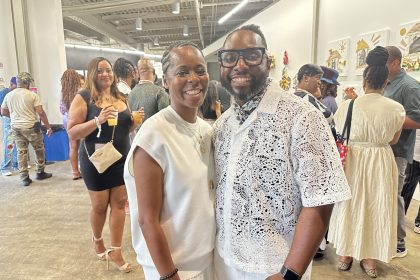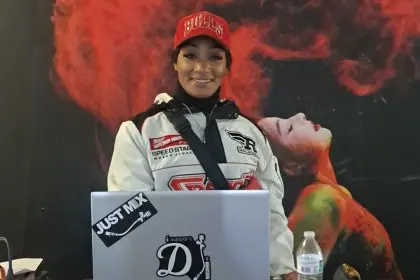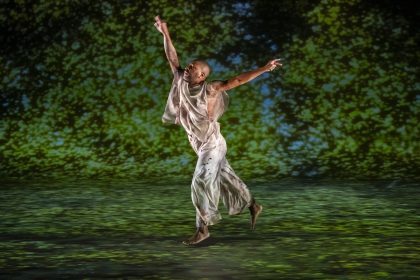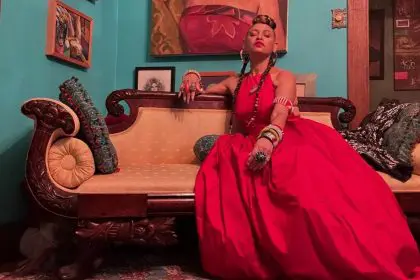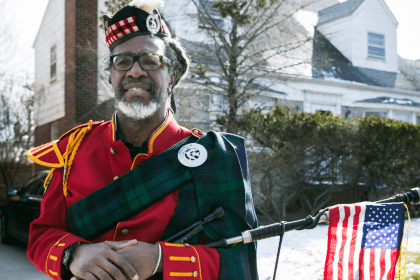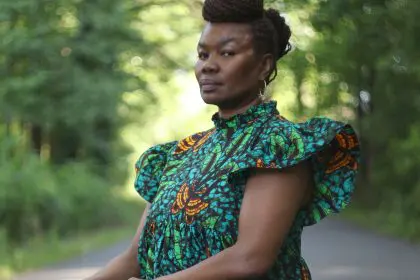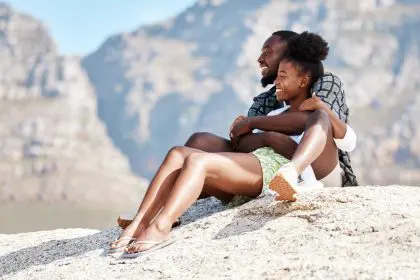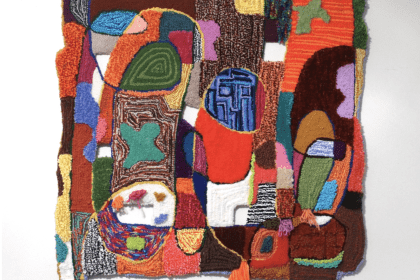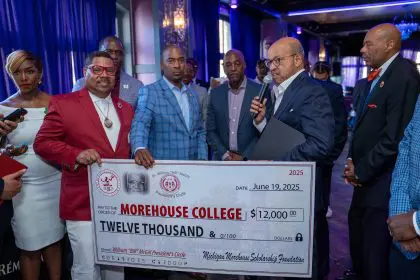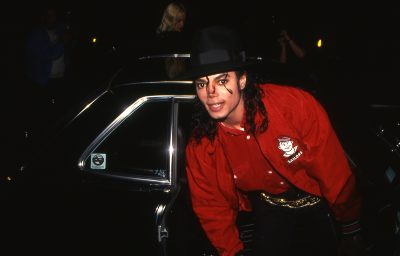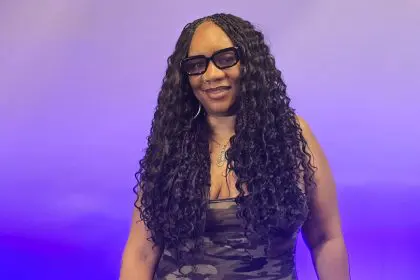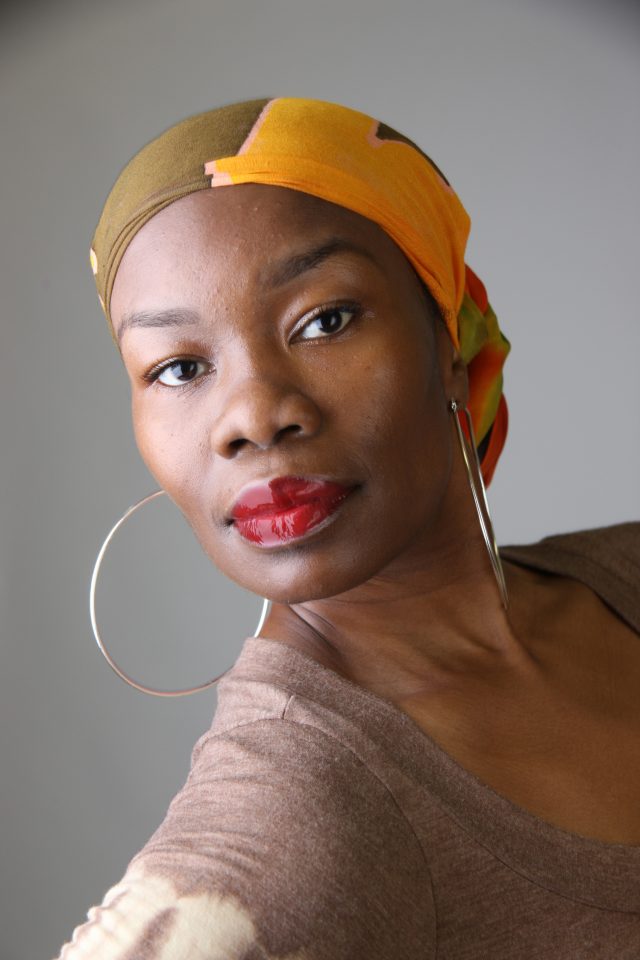
Grace Kisa: The reason I was saying that I wasn’t Black was because I came here with an identity already. I came here as a Kenyan living in the United States. When we were in school in McLean, Virginia, the population was [made of] people from are all over the world and so they identified by the countries. It wasn’t until I moved to the South, that it was distilled down to two choices, Black or White. So I always asserted that I am from Kenya.
Are you going to be exhibiting any of your sculptures?
GK: I am. I used wood, plastic [and] metal fiber to make these costumes, kind of in the same way that I do with my mixed media sculptures. The woman becomes a living sculpture and I build the costuming around each model. I use the same materials to make these elaborate, kind of futuristic, somewhat traditional, but it’s produced in a futuristic aesthetic.
How would you describe these images now that you see them as a body of work?
ME: I see them as icons. I see them as more than goddesses. They encompass everything; realness, strength, and warrior spirit. I wanted them to be new icons for little girls to look at and say, “Hey, I look up to this image, this image of this woman is beautiful, and it’s a reflection of me.” Whether it’s in the skin tone, whether it’s in the body shape, because all of these women have different body types. We were looking for women of all different shapes and sizes because I want everyone to be represented.

